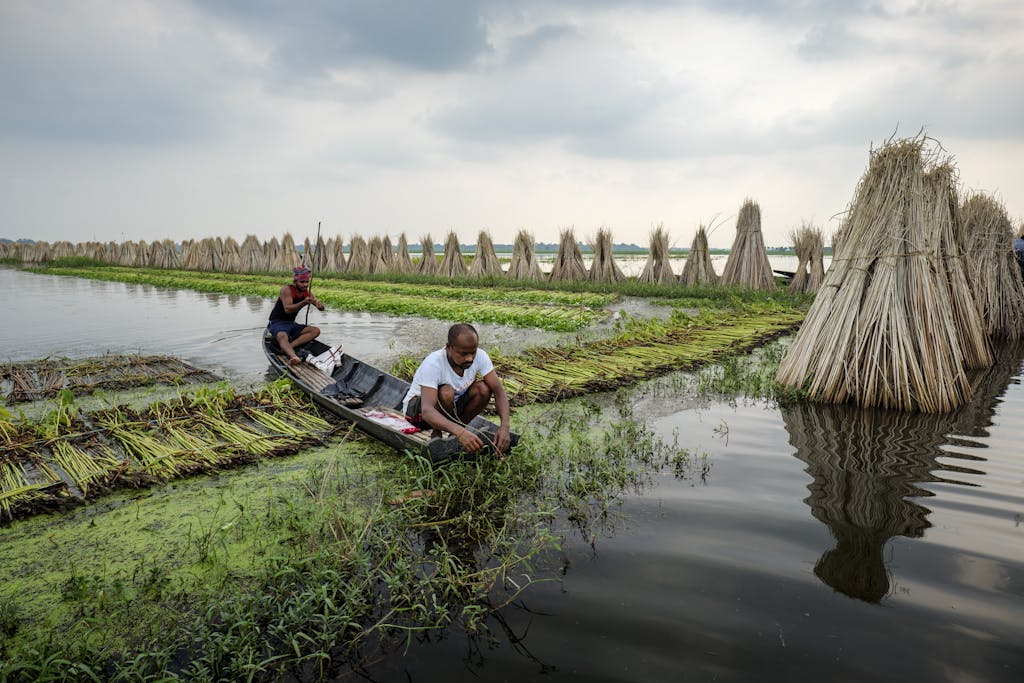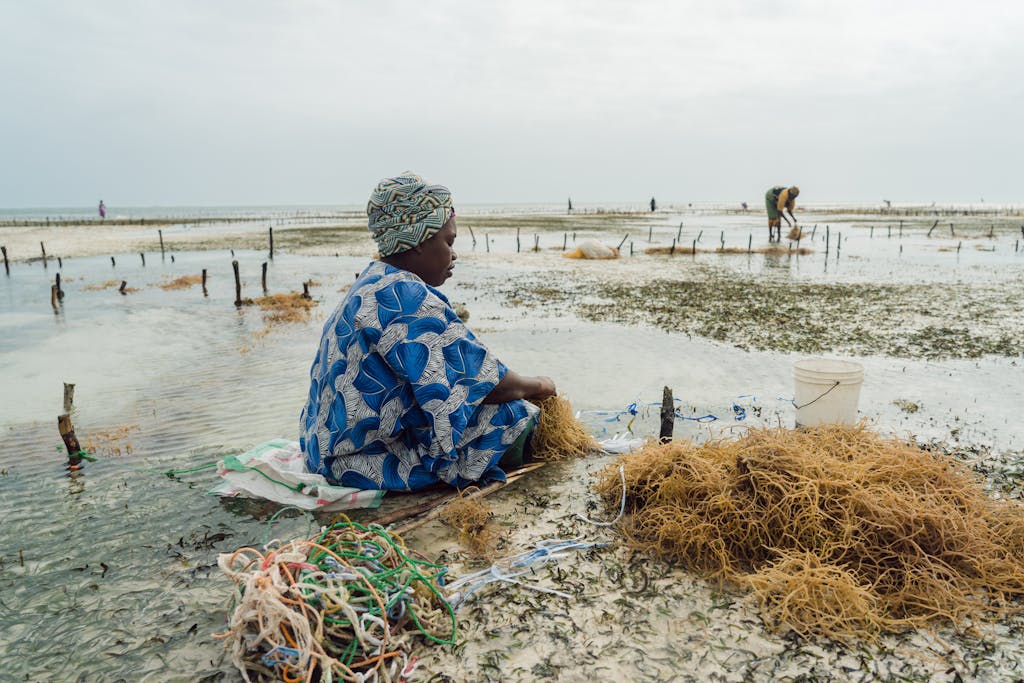As the impacts of climate change intensify, calls for increased financing to help countries adapt are gaining momentum. The UN Climate Change Conference represents the first of several upcoming opportunities for world leaders to accelerate adaptation action by mobilizing much-needed financing for developing countries bearing the brunt of climate change.
From devastating floods and storms to brutal heat waves and droughts, more than 1.2 billion people are at high risk from the devastating impacts of climate change worldwide — and have to change the way they live. Yet, finance remains a critical bottleneck in unlocking robust adaptation action.
According to the latest information from the UN Environment Programme, there is a staggering shortfall of $194 billion to $366 billion in adaptation funding per year. The need for financing is now 10 to 18 times the current international public adaptation finance flows — and growing. Crucial decisions made at the upcoming UN Climate Change Conference, known as COP 29, and other convenings in the near future could either help bridge this gap or leave us even more vulnerable to climate risks.
The New Collective Quantified Goal: Shaping Adaptation Finance for Years to Come
At the heart of the adaptation finance discussion is the New Collective Quantified Goal, which countries will aim to finalize at COP 29 in Baku, Azerbaijan. Building from a baseline goal of $100 billion of total climate finance annually for both mitigation (reducing greenhouse gas emissions) and adaptation, the NCQG will define the structure, quantum, and focus of climate finance commitments for years to come. Historically, adaptation has taken a back seat to mitigation; of the $100 billion goal, less than one-third is for adaptation. Ensuring adequate resources for adaptation will require a dedicated focus within the NCQG.
NCQG: The role of different sources for adaptation finance, which the UN Foundation recently published with Germanwatch, recommends establishing a specific subgoal for adaptation finance under the NCQG. This would safeguard adaptation finance as a distinct area of investment and guide how that funding should be delivered to better meet the needs of developing countries, which are least responsible for the climate crisis and yet are suffering the brunt of its impacts. While many issues are still to be decided as the new climate finance goal is finalized, an adaptation finance subgoal may become the best opportunity for developing countries to secure a meaningful part of the support they need for adaptation action.

Heavy rain from cyclones over the Bay of Bengal led to a drastic increase in jute farming. One of the best alternatives to plastic, jute requires a substantial amount of water to grow. Without sufficient water, jute farming had been in decline in West Bengal, India. Photo: Dipayan Bose/ Climate Visuals Countdown
Investing in the Adaptation Fund
At COP 29, developed countries will also make funding pledges to the Adaptation Fund, the only climate fund dedicated exclusively to adaptation. Since 2010, the Adaptation Fund has committed over $1 billion for climate change adaptation and resilience projects. Responding to the needs of developing countries, the Adaptation Fund pioneered so-called direct access, which allows government entities to obtain funds without intermediaries and take charge of their own adaptation implementation. Recently, the Adaptation Fund opened a window for locally led adaptation so resources can be channeled to new projects in vulnerable countries led by local institutions and communities that can make their own decisions about how funds are used. The Fund recently allocated $35 million to a new locally led adaptation global aggregator, which will channel grants to community-based organizations, Indigenous people organizations, and local governments, among others.
Despite its strong track record, however, the Adaptation Fund fell short of its funding target last year. At COP 29, it aims to raise $300 million to finance its project pipeline. Failing to meet this target would send a troubling signal about the global commitment to scaling up adaptation efforts at a critical time. Developed countries must ensure that this year’s target is met or exceeded.
International Development Association Pledges: A Crucial Opportunity
On the heels of COP 29, the International Development Association replenishment meeting in December is another crucial event. As part of the World Bank, the IDA provides concessional funding — financing options at below market rates — to the world’s least developed countries. While not a climate fund per se, IDA supports various adaptation measures through grants and low-interest loans that help address development deficits that exacerbate climate vulnerabilities, such as substandard health or sanitation systems, and proactive adaptation measures, such as building climate-resilient infrastructure.
Without adequate financial support from IDA, the most vulnerable countries would be left with even fewer resources to grapple with climate impacts. Adaptation finance from multilateral development banks must receive a significant boost to meet the ever-increasing demand for support. The December pledging session will be a pivotal moment for strengthening this essential financing pipeline.

A seaweed farmer in Zanzibar attaches seaweed seedlings to a rope in preparation for a harvest. Researchers have found that seaweed can play a huge role in countering climate change by absorbing greenhouse gas emissions from the atmosphere and regenerating marine ecosystems. Photo: Natalija Gormalova / Climate Visuals Countdown
The Evolving Role of International Finance Institutions
International finance institutions (IFIs), such as the World Bank and the International Monetary Fund, are crucial in mobilizing adaptation finance. As adaptation financing needs evolve, so too must the role of IFIs. The Bridgetown Initiative, championed by Barbados Prime Minister Mia Mottley, advocates for bold reforms to change how these institutions are governed and function. The initiative calls for increased funding and more concessional lending to developing nations to support climate resilience, as well as restructured repayment terms after climate disasters to prevent debt crises, among other reforms.
Implementing and expanding debt relief clauses would allow borrowing nations to restructure their debt for commitments to adaptation investments, allocating capital for resilience-building efforts, or to postpone repayments in the aftermath of a climate disaster, providing much-needed breathing room during crisis situations.
Another key reform agenda involves the International Finance Corporation (IFC), the private sector arm of the World Bank Group. Unlocking private capital is seen as one of the most critical yet underutilized avenues for scaling up adaptation finance, but that requires public sector investment to enable innovation and entry into underserved markets. The IFC is exploring how to expand private sector investment in adaptation services, which, with the right policy signals and risk-sharing mechanisms could channel private investments into underserved markets, drive innovations, and ramp up funding to scale solutions.
This evolution in the role of IFIs is currently underway. The World Bank Group Spring Meeting in April 2025 will be the next key milestone for these reforms, making this a space to watch closely in the months ahead.
Mainstreaming Adaptation in Development Finance
There is also a growing push to mainstream adaptation finance in broader development frameworks. The UAE (United Arab Emirates) Global Climate Resilience Framework, established at COP 28, embeds climate resilience across seven sectoral targets — water and sanitation, food and agriculture, ecosystems, infrastructure, health, livelihoods, and cultural heritage — making it a useful framework to guide mainstreaming investments.
Looking ahead, the Fourth International Conference on Financing for Development in late June 2025 offers a significant opportunity to further integrate adaptation into international financing discussions. The latest Financing for Development Report emphasizes the need to align development finance with climate adaptation and resilience goals by calling for a reformed financial architecture that incentivizes investments in resilience. It emphasizes the central role of fiscal policy decisions in helping climate adaptation funding efforts. Mainstreaming adaptation into these upcoming conversations can ensure that climate resilience is integrated into broader development funding strategies.
A Critical Moment for Adaptation Finance
Key decisions will be made inside and outside of the climate regime over the coming months. Ministers of finance hold significant sway over the allocation of public funds and governance of climate finance institutions but, given multiple competing needs for finite resources, often do not prioritize adaptation financing. Engaging ministers of finance on these issues will be essential to prioritize reforms supporting adaptation and harness the intersection between adaptation and development agendas.
The opportunity cost of inaction is far too high. Delays in adaptation will result in increased suffering for communities on the front lines of climate change, as well as more challenging, and costly, recoveries. As we approach COP 29 and look beyond the annual conference, the world must seize these opportunities to scale up adaptation finance to secure a resilient future for all.
COP 29 Agenda and Resources
Follow UN Climate Change for key dates and updated information on COP 29, which begins on November 11 in Baku, Azerbaijan.






